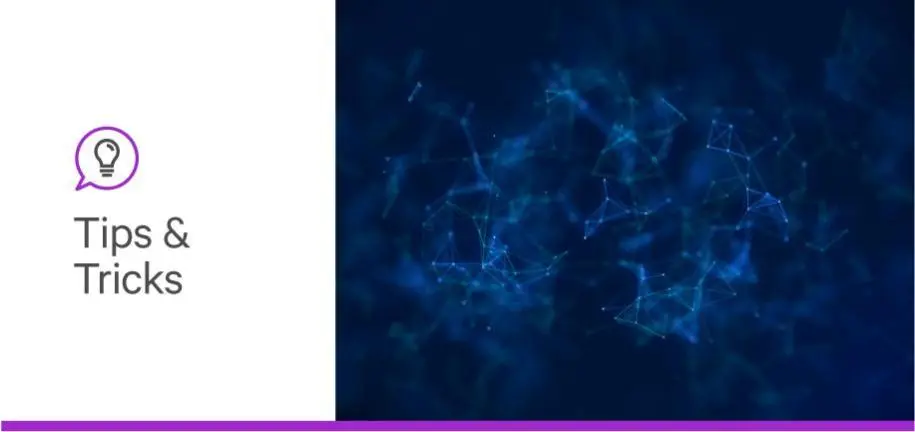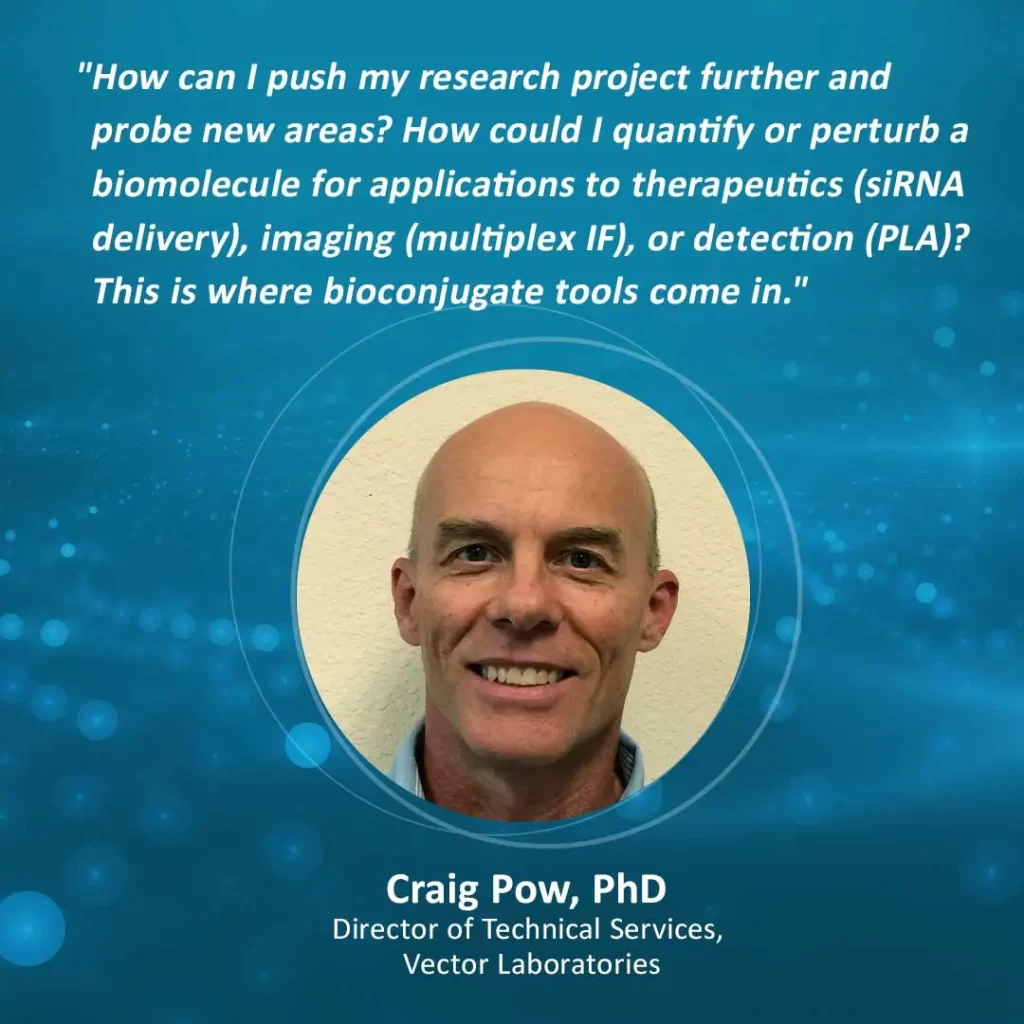
Vector Laboratories is closed for the President’s Day on Monday, February 19th. We will be back in the office on Tuesday, February 20th.
We will respond to emails upon our return. Have a wonderful day.
Menu
Vector Laboratories is closed for the President’s Day on Monday, February 19th. We will be back in the office on Tuesday, February 20th.
We will respond to emails upon our return. Have a wonderful day.

Bioconjugation offers a way to chemically link two molecules to form a single hybrid, where at least one of the molecules in the partnership is a biomolecule. The resulting product retains the activity of each component, yet also gains a novel function that is not possible with either molecule alone. In a recent webinar, Dr. Craig Pow, Director, Technical Services at Vector Laboratories, provided an introduction to bioconjugation and its applications, as well as key factors to success. You can watch the entire on-demand webinar or keep reading for the answer to your questions.
What you want is to use a highly purified material—for oligos, pass it through high-performance liquid chromatography (HPLC), and you may want to desalt it as well.
To get rid of amine contaminants and preservatives, you may want to do a buffer exchange to prepare the buffer for subsequent bioconjugation. Vector Laboratories bioconjugation kits include Zeba™ desalting columns to enable that buffer exchange.

You may also want to make sure that your biomolecules are within the appropriate concentration range — use too little and you might not get appropriate labeling, use too much and you might have issues with solubility. Another consideration would be volume. Don’t use very small amounts because you might lose the material when you go through a purification step at the end when you remove unincorporated label. The opposite scenario, using too much material, might be problematic as well as it will reduce labeling efficiency. With HyNic and 4FB linkages, there are checkpoints during the bioconjugation methodology where you check the molar substitution ratio (MSR). These checkpoints enable you to assess how much HyNic and 4FB is attached to your molecules to ensure you have an appropriate MSR before you move forward with your bioconjugation reaction. You can then use the hydrazone bond or chromophore to both confirm the conjugation has occurred and quantify the amount. If you’re working with precious materials, this will give you the confidence to proceed.
These are different kits designed for each of these applications. The antibody kits have highly stringent steps in terms of purification, and include a purification step to clean up the labeled antibody. Antibodies are typically around 150 to 160 kD in size, therefore, an affinity resin is included in the antibody:oligo kit that binds to all mammalian IgG isotypes, ensuring that the conjugate is highly purified. With protein, there is often more variability in size, and one purification step may not fit all. Instead, your purification process will depend on the molecular weight of the protein you’re working with. I’d recommend looking at the protocols for each of these kits to better understand the parameters for consideration.
There are other methodologies for bioconjugation that were touched on during the webinar. SoluLINK chemistry, based on HyNic and 4FB, includes checkpoints, such as molar substitution ratio, as well as a hydrazone chromophore that allows you to do a quick UV scan to quantify that your conjugation was successful. This is invaluable for investigators who want consistency, reliability, and reproducibility. Some other kits on the market may have a shorter protocol, but there’s no cleanup step, so you can be left with residual material. If you’re working with particularly precious material or you need highly reproducible results, this purification step can be critical. Without it, you can run into problems with background, inconsistency, and poor labeling efficiency.
Some investigators working with siRNA are trying to increase its longevity once injected. It can be cleared pretty quickly by either the kidneys or liver. The idea is to apply conjugation to a given target protein, so it can then be incorporated into target cells where it can perform its role of breaking down in a complementary RNA. Some researchers are looking at things called protein cages that actively protect siRNA and allow substantial amounts to get incorporated into the cell at the place of entry. For this application, you would need to follow the same methodologies as per the protein-oligonucleotide kit in terms of cleanup.
Watch the entire on-demand webinar for more information on bioconjugation, including case studies demonstrating how bioconjugation is being used to push the frontiers of both medicine and science, as well as an overview of the SoluLINK chemistry and Bioconjugation portfolio from Vector Laboratories. And be sure to check out our Bioconjugation Resource Guide to help you get started.





Stay in the Loop. Join Our Online Community
Together we breakthroughTM

©Vector Laboratories, Inc. 2024 All Rights Reserved.